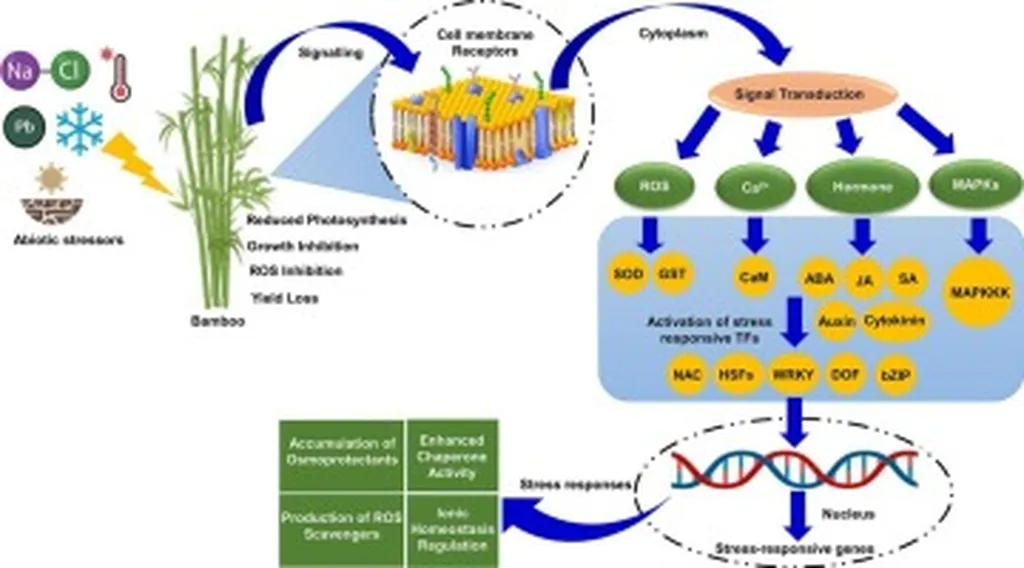In the heart of China’s lush landscapes, a humble bamboo species, Phyllostachys pubescens, often referred to as moso bamboo, is playing a pivotal role in a groundbreaking study that could revolutionize our understanding of plant resilience to environmental stresses. This research, led by Anita Kumari from the CSIR-Institute of Himalayan Bioresource Technology, delves into the intricate world of glyoxalase genes, uncovering their potential to enhance stress resistance in plants—a discovery that could have profound implications for the energy sector and sustainable agriculture.
The study, published in the open-access journal BMC Plant Biology (which translates to “Basic and Applied Plant Biology”), identifies and characterizes a family of genes known as glyoxalases in moso bamboo. These genes are crucial in detoxifying methylglyoxal, a cytotoxic metabolite that accumulates under abiotic stresses such as cold, drought, heavy metals, and salinity. By understanding how these genes function and respond to various stresses, researchers aim to develop plants that can better withstand harsh environmental conditions.
Anita Kumari and her team identified 19 GLYI, 18 GLYII, and 15 GLYIII gene candidates in moso bamboo, each featuring characteristic domains that play distinct roles in stress mitigation. The presence of various cis-elements in the promoter regions of these genes provides insights into their regulation under different conditions. “The identification of stress-responsive transcription factor binding sites in the promoter regions of glyoxalase genes is a significant finding,” Kumari explains. “This suggests that these genes are not only responsive to abiotic stresses but also play a role in hormonal responses and developmental processes.”
The expression analysis of these glyoxalase genes under different stress conditions revealed significant variability, underscoring their potential roles in stress modulation. Notably, genes such as PhGLYI-15, PhGLYII-9, and PhGLYIII-3 showed consistent upregulation under various abiotic stresses. “The consistent upregulation of these genes under multiple stress conditions indicates their crucial role in managing oxidative stress, osmotic regulation, and cellular redox homeostasis,” Kumari adds.
The implications of this research extend beyond the realm of plant biology. Moso bamboo, known for its rapid growth and high carbon sequestration capacity, is already a valuable resource in the energy sector. By enhancing its resilience to environmental stresses, this research could pave the way for more sustainable and productive bamboo plantations. These plantations could serve as a renewable resource for bioenergy, contributing to a greener and more sustainable energy future.
Moreover, the insights gained from this study could be applied to other economically important crops, leading to the development of stress-resilient varieties. This could have a significant impact on global agriculture, particularly in regions prone to environmental stresses. “Our findings reveal that glyoxalase genes crucially contribute towards the improvement of cellular osmotic potential in moso bamboo under different abiotic stresses,” Kumari states. “This study enhances our understanding of glyoxalase genes’ evolution and functional roles in plants and opens new avenues for developing stress-resilient crop varieties for sustainable agriculture.”
As the world grapples with the challenges of climate change and environmental degradation, the need for resilient and sustainable agricultural practices has never been greater. This research not only advances our understanding of plant biology but also offers practical solutions for enhancing crop resilience and productivity. By harnessing the power of glyoxalase genes, we can look forward to a future where plants can thrive despite the adversities posed by a changing climate.

